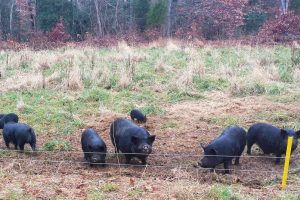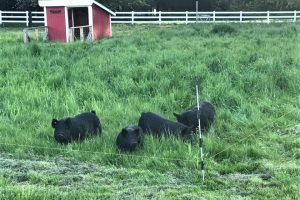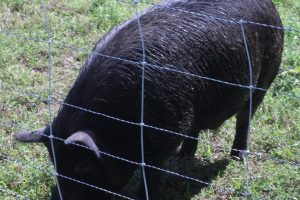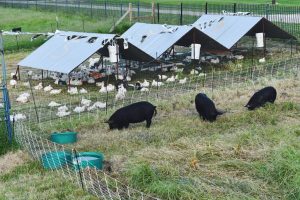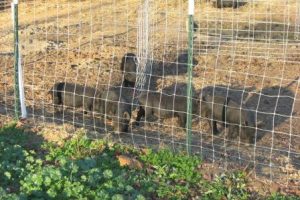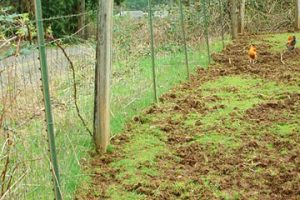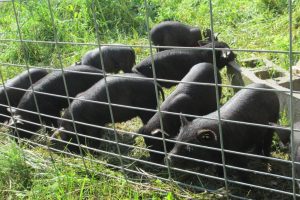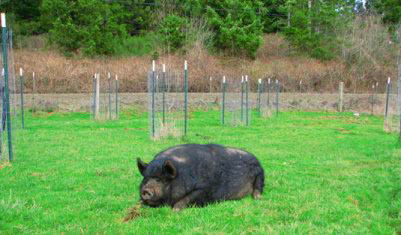Containing the American Guinea Hog
The key to containing any animal is happiness. When hogs have plenty of food, water, and adequate shelter from the elements, they are far less likely to test their fences.
Various types of fencing are used to contain American Guinea Hogs. Examples include:
- woven wire field fencing (4 ft high)
- hog wire (26″ to 34″ high)
- hog panels (3 ft high) or cattle panels (4 or 5 ft high),
- electric mesh fencing
- high tensile electric fencing
- multi-strand polywire fencing
- pallet fencing
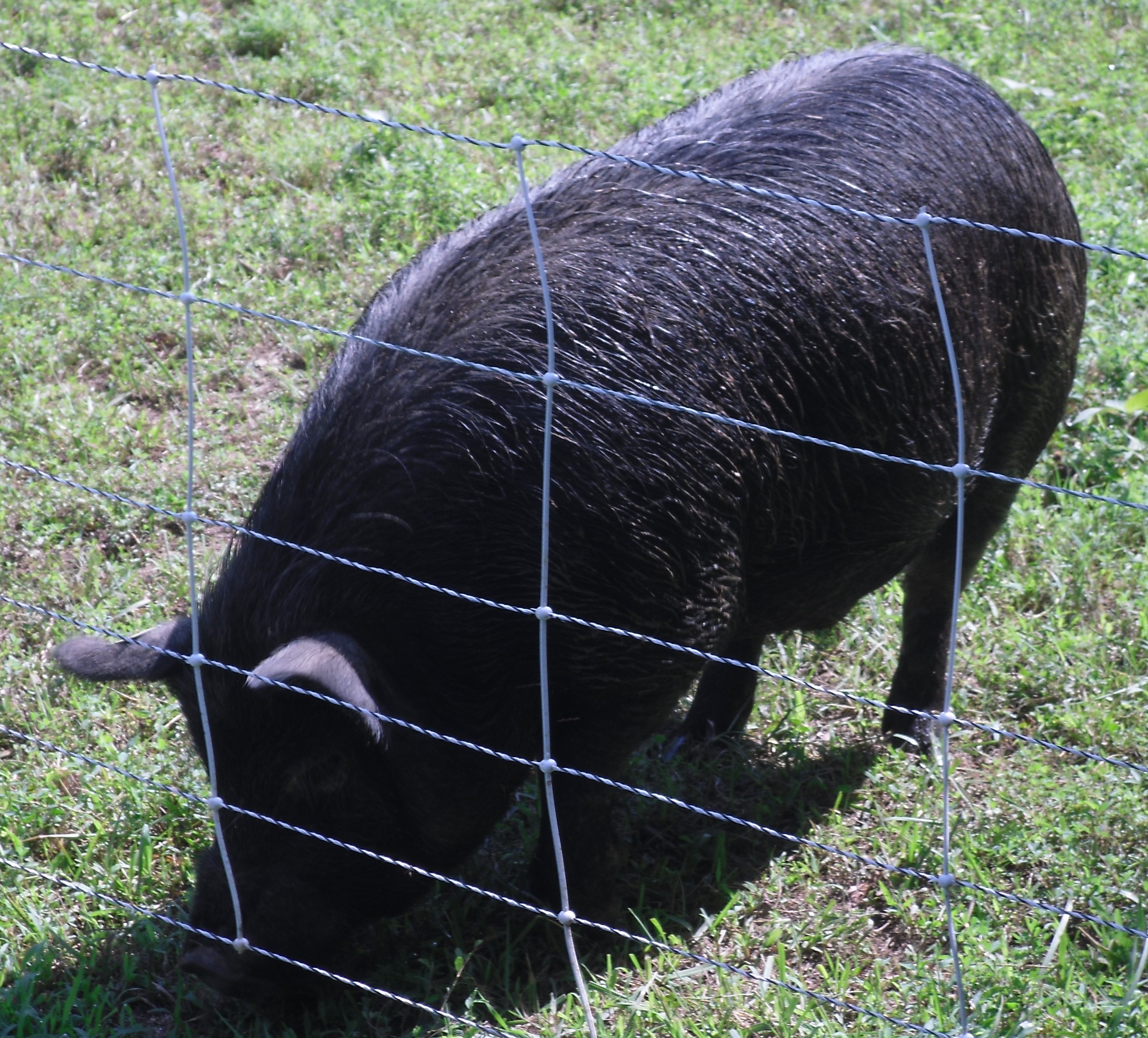
- Two-Strand Polywire Fence
- Single Strand Electric for Frequent Rotation
- Electric Mesh Fencing
- 24" Electric Mesh HogNet
- Five Strands - High Tensile Wire
- Woven Wire
- Woven Wire with Electric at Top & Bottom
- Woven Wire with Wood Posts & T Posts
- Pallet Fencing
- Livestock Panel
Photos of fencing can be found in a variety of farming books including Storey’s Guide to Raising Pigs. If you are just starting out and trying to configure a good fencing system, have a look at the “wagon wheel” configuration on page 128 of this book; it allows for the housing, feed and water to remain in one location, with easy access to a number of pens, thus allowing the pasture to regrow after the hogs have been moved to the next pen.
Keeping at least 4 hog panels on hand can be quite useful when you need to temporarily pen up your hogs. A temporary pen using such panels can be held together by ordinary hay baling twine or bull snaps. Visit the Portable Pens page on this site for more information on movable containment for your pigs!
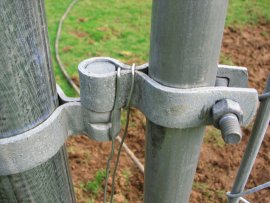
If you have pre-existing chain link fences and gates, you might be aware that goats and pigs are able to lift these gates off their hinges once they’ve figured out how. Here you can see how the folks at Cascade Meadows Farm figured out a solution to this problem using wire on the hinges.
A young orchard is protected from the pigs with 2″ x 4″ welded wire with t-posts. While the welded wire is enough to keep their pigs out of the young trees, it does not work for cattle, sheep, or goats. They had to come up with a modified version for the nut trees they planted in the pastures where they run those livestock using a combination of 4″x4″ cattle panels (strong enough for cattle) and chicken wire (small enough for sheep and goats).

